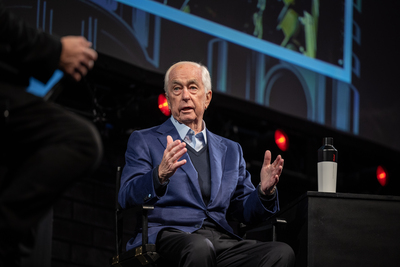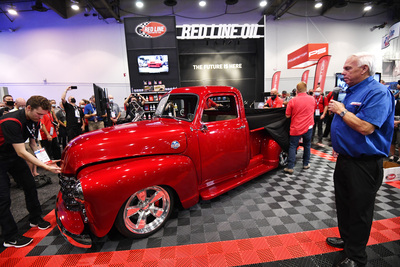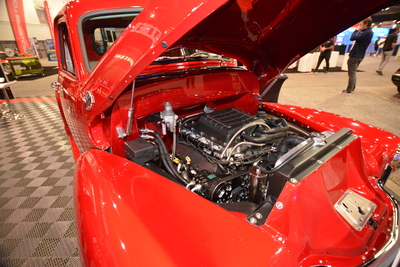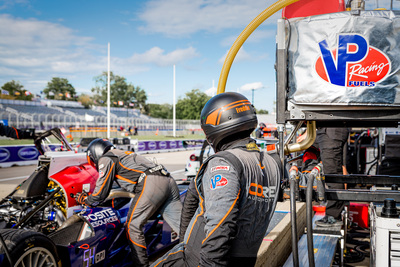BUSINESS
Going Carbon-Neutral
Why the Race Is on to Achieve Ever-More-Ambitious Standards
By Mike Imlay

In July 2021, the European Union (EU) published its European Climate Law, setting a goal of full carbon neutrality by 2050 and a more immediate 55%-reduction target for greenhouse gases by 2030. The legislation has broad implications for any company with a presence in an EU-member state. Photo courtesy: Leonid Andronov/Shutterstock.com
Carbon neutrality is a hot-button issue laden with political overtones and media hype—a true third rail if there ever was one for many in the automotive industry. Yet a growing number of brands are announcing green-friendly initiatives aimed at sustainability and carbon reduction. What’s driving this trend? And more importantly, how are industry businesses future-proofing themselves against what may be an unstoppable seismic shift?
First, understanding the decarbonization movement entails unjumbling the jargon. Carbon neutrality or “net-zero carbon dioxide (CO2) emissions” is defined as striking a balance between human-caused CO2 emissions and their removal from the global environment. This can involve “carbon offsets,” which represent greenhouse gas (GHG) reductions, or “carbon storage” increases through such practices as land preservation or tree-planting initiatives. These offsets compensate for emissions generated elsewhere.
Then, of course, there are offset credits—transferable instruments representing a single metric ton of CO2 or other GHGs. They can be sold and traded between businesses to reach decarbonization goals.
Finally, there’s sustainability—a concept that the United Nations World Commission on Environment and Development defines as actions that maintain natural resources so that future generations can “live an equal, if not better, way of life.” This is where renewable energy and materials sources factor into the environmental equation.
Such concepts may sound like PR catchwords, but they reflect global economic realities that—all arguments about climate change aside—may soon impact businesses at every level.
Global Forces

Interviewed by Speed Sport’s Ralph Sheheen at the 2022 Performance Racing Industry Trade Show opening breakfast, Indianapolis Motor Speedway owner Roger Penske (pictured) reaffirmed Penske Corporation’s commitment to carbon neutrality, an issue gaining serious traction in the racing and performance community. Photo courtesy: Performance Racing Industry
In July 2021, the European Union (EU) promulgated Regulation 2021/1119 of the European Parliament and Council. The rule established a framework for achieving “climate neutrality” throughout the EU by 2050, with intermediate carbon neutrality targets in 2030 and 2040. The legislation calls for aggressive measures to reduce GHG emissions and balance any remaining emissions through offsetting measures to achieve a net-zero emissions balance.
Although the United States has not enacted similar legislation, the Biden Administration launched a “whole-of-government process” in April 2021 through the president’s National Climate Task Force to establish a 50% to 52% GHG reduction from 2005 emissions levels throughout the American economy. (Of course, states such as California continue to enact variously stringent measures to regulate carbon emissions on their own.)
In the automotive realm, these initiatives have become market drivers for new research and development, supply-chain decisions, and even venture capital investments. Decarbonization measures are now sweeping the industry, from OEMs to specialty-equipment suppliers. Consider a few recent news items:
In June 2020, Ford Motor Company released its annual “Sustainability Report” highlighting its efforts to achieve carbon neutrality by 2050. At the time, Ford claimed to be “the only full line U.S. automaker committed to doing its part to reduce CO2 emissions in line with the Paris Climate Agreement and working with California for stronger greenhouse gas standards.”
To meet its goals, the automaker promised sweeping changes to its vehicles, supply base and company facilities. Ford additionally touted its then-$11.5 billion investment in vehicle electrification as well as its progress toward powering all of its manufacturing plants via “100% locally sourced renewable energy” by 2035.
Not to be outdone, General Motors (GM) announced the following year that it would become carbon-neutral in its global products and operations by 2040, centered on what it called “science-based targets.” While much of the media focused on the automaker’s vehicle electrification goals, the company also announced a major initiative for powering all of its U.S. facilities with renewable energy by 2030, heavy investments in carbon offsets and credits, and a commitment to emissions reductions throughout its supply chains.
Further underscoring the industry race toward decarbonization through vehicle electrification, Nissan has partnered with NASA to develop a new electric vehicle (EV) battery that will be safer, lighter and quicker to charge than today’s versions. The all-solid-state units will replace lithium-ion batteries, avoiding the use of rare metals. Toyota, Volkswagen, GM and Ford are also reportedly working on similar projects.
Perhaps due to their world-wide nature and close alignments with major OEMs, motorsports organizations and brands also appear to be racing alongside automakers to embrace carbon neutrality. Two years ago, when famed Penske Corporation Chairman and CEO Roger Penske acquired the Indianapolis Motor Speedway, he personally toured the facilities looking to improve the fan experience. But he had an equal eye out for reducing the speedway’s carbon footprint.
“I think we spent the next two weeks walking every restroom, every refreshment stand, up in every stand,” he related onstage to Speed Sport’s Ralph Sheheen during the 2021 Performance Racing Industry (PRI) Trade Show opening breakfast in Indianapolis. “When you look at the whole footprint, we have 1,000 acres, and we’re looking at sustainability. We’re certainly looking at decarbonization, and I think that has really popped to the top of the list when you look at a 10-year plan. We’d like to be carbon-neutral at the track as we go forward for the next several years.”
Penske added that Penske Corporation is scrutinizing everything from the use of paper towels in restrooms to the environmentally safe disposal of tires. The corporation and Team Penske also announced last year that they would enter a “strategic collaboration” with Shell Oil to address emissions across supply chains, including warehouse facilities, vehicle and fleet technologies, and transportation routes. In addition, the two companies are aiming to reduce the carbon footprint of the NTT IndyCar series.
Motorsports suppliers are following suit. VP Racing Fuels is one of several fuel and lubrication brands adding synthetic biofuels to its race-fuel portfolio. The company also continues to test new formulations to meet oncoming renewable fuel requirements set by multiple race series, including Formula 1 and the International Motor Sports Association.
“Many race series, mainly from Europe, require carbon-friendly fuels to help reduce the overall CO2 footprint that race events bring,” explained Mike Saeger, VP Racing Fuel’s senior marketing coordinator. “As a world leader in fuel tech, our OEM and race series partners look to VP to deliver solutions with sustainable components to meet their environmental goals while maintaining performance.”
Saeger added that supplying these types of fuels has its own set of challenges: Biofuels can cost up to four times the amount of fossil fuels. Developing fuels that are chemically equivalent to their fossil counterparts in terms of power and performance also requires much R&D. Moreover, the fuels’ advanced renewable components aren’t easily sourced, especially in the United States.
“Long term, VP is working with other technology groups to produce its own advanced renewable feedstocks to further reduce our CO2 footprint,” Saeger said.
While they may not always tout a green message, numerous specialty-automotive companies are also innovating solutions that can drastically cut or eliminate vehicle emissions. Sometimes the carbon reduction is an intentional goal, and sometimes it’s a happy byproduct of increasing a vehicle’s efficiency and performance. More often, however, it’s a combination of all the above.
Saving the ICE


At the 2021 SEMA Show, Arrington Performance CEO Mike Copeland revealed a stunning full-custom ‘48 Chevrolet pickup with a twist: The vehicle runs on an internal-combustion engine (inset) fueled by green hydrogen. Copeland envisions the technology as a viable, scalable alternative to electrification.
Amid the rising demands for EVs and synthetic fuels, Arrington Performance CEO Mike Copeland believes that the industry may be overlooking something more elemental—namely hydrogen. At the 2021 SEMA Show, Copeland unveiled a fully custom, hydrogen-powered ’48 Chevrolet pickup with a twist. The vehicle utilized a 6.2L Chevrolet LS engine adapted for green hydrogen—an internal-
combustion engine (ICE) technology that he believes offers a viable alternative to other emerging technologies.
“I think we’re the only people that are making a true carbon-neutral package, because electricity is not always clean to generate,” Copeland said. “In our case, we take green hydrogen, use it in our truck, extract the energy, and create transportation with zero carbon footprint.”
Green hydrogen is produced using solar power and other zero-GHG processes and can be manufactured on-site virtually anywhere. Unlike fuel cells, which pass hydrogen through a membrane to create the electricity to propel a vehicle, Arrington’s method follows a traditional ICE design.
Copeland added that the Chevy’s 3kg tank fills in 3 min.—a fraction of the time it takes an EV to charge. Moreover, his engine’s range and towing capacity are more akin to those of a gasoline engine.
Although it’s a pricey alternative now, Copeland believes that scaling production will drop costs exponentially. Arrington’s immediate goal is to supply vehicle, taxi, bus and governmental fleets to bring this about. That will allow Arrington to offer affordable “hydrogen crate engine” solutions to builders. The company is presently working toward California Air Resources Board certification and is in negotiation with a fleet owner who’s considering the conversion of up to 200 buses.
“Today, there are around 280 million registered internal-combustion, gasoline-powered vehicles in the United States,” Copeland said. “None of those can be converted to a hybrid, an electric, a fuel cell or any of that without basically scrapping the vehicle and starting over. With our process, we save those 90 million vehicles. All of those can be converted to run on hydrogen and save the scrapping of many millions of vehicles.”
Copeland knows that hydrogen has its naysayers—many people mistakenly think “Hindenburg” when they think hydrogen. However, he says that the technology is a safe alternative for preserving older and classic ICE vehicles in the face of ever-stricter emissions laws.
“I’m a hot rodder,” he explained. “I’ve got a bunch of hot rods. I’ve got a number of classic cars. I want those to be around for the next generation.”
Increasingly, specialty-equipment companies are proving that decarbonization doesn’t mean sacrificing performance or vehicle efficiency. Just the opposite. Still, a green message can be a hard sell with the aftermarket audience.
Pareto Point Industries CEO Bob Hammer and President Adan Reinosa, P.E., formed their company in 1999 to develop and market the Mini Bypass Oil Filter Booster system, which filters oil at the superfine level of 2 microns. The system bolts on to an existing filter, diverting a small oil flow through a denser filter. By saving wear and tear while extending engine longevity, the unit helps reduce a vehicle’s carbon emissions over a prolonged lifecycle.
The invention even garnered a SEMA Show New Product Award and multiple SEMA Show Global Media Awards in the early ’00s.
Pareto has since introduced the TopDog-V 5-micron fiber. However, said Hammer, “It turns out that the market is a little bit more niche than we would have liked. It seems that a lot of the people with an environmental mindset are not necessarily SEMA or automotive-aftermarket people.”
Pareto has seen some success with off-road consumers, who appreciate the system’s benefits in a harsh and gritty environment. But Hammer believes that governmental fleets striving to meet stringent carbon-reduction goals may prove more lucrative. Pareto now has an agreement with the Donaldson Company to further develop its technologies and pursue new applications and markets.
Future-Proofing

VP Racing Fuels is among the many motorsports suppliers helping racing organizations and teams hit their environmental targets. The company continues to test and develop new synthetic biofuels to conform to upcoming race series requirements, including for Formula 1 and the International Motor Sports Association. Photo courtesy: VP Racing Fuels
Aside from environmental concerns, sheer market forces will likely move industry businesses large and small toward carbon-neutral operations, despite the perceived cost and disruption.
“For sure, changes in energy infrastructure or energy production require investment, but they will pay off, especially in areas with high energy prices, rising CO2 costs or high volatility,” said Rainer Berghausen, head of Trumpf Group communications. An industrial machine manufacturer headquartered in Ditzingen, Germany, the company has joined the Science Based Targets Initiative, committing to carbon reductions in accordance with the Paris 1.5C-degree target.
This goal, which Berghausen conceded is “very ambitious,” means that Trumpf will, among other things, improve the energy efficiency of its buildings, produce its own green energy through solar power, and electrify its car fleet.
“Emissions that we can’t yet avoid are being compensated with high-quality projects,” he added. “These measures already make our own production carbon neutral today. In parallel, we have started to tackle emissions in our up- and downstream value chain as well.
“Additionally, these investments will prevent losing orders. Demands from customers and society in that area are increasing, so even the smallest companies in industrial supply chains will have to deal with their emissions sooner or later. We expect that companies that ignore this transition will face some challenges in keeping up their customer relations.”
Trumpf is equally committed to refining its machine products to help its customers meet their own decarbonization goals, putting more effort into decreasing machine energy consumption while making more efficient use of materials. The company also offers alternative machine technologies such as additive manufacturing.
“This directly benefits the emissions in our customers’ production,” Berghausen said. “The demand for this is definitely growing.” He further noted that even small operations can begin now to future-proof against the inevitable market realities to come.
“First, gain an overview of where the energy—the power, gas, oil, air—in your company actually goes,” he advised. “Identify the largest energy user and start with that. A lot of energy efficiency measures require just a little more attention, like turning off machines when they are not needed, fixing leakages, keeping doors closed, or fully utilizing metal sheets, etc. Also, switching the energy supply to renewables instead of energy from fossil fuels is quick and relatively easy to implement.”






